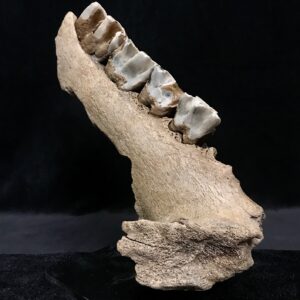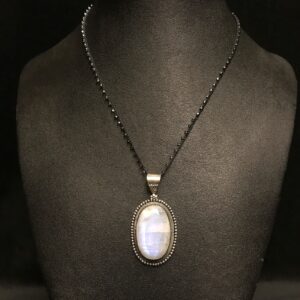Description
Optical Calcite Mineral Specimen.
You will receive this specimen.
Optical calcite, also known as Iceland spar, is a transparent, colorless variety of the mineral calcite, a common carbonate mineral made up of calcium carbonate (CaCO₃). It has a number of interesting optical properties, which make it a fascinating material in both scientific and historical contexts.
### Key Characteristics of Optical Calcite:
1. **Double Refraction (Birefringence):**
Optical calcite is best known for its pronounced double refraction, also known as birefringence. When light passes through the crystal, it splits into two separate rays. This creates a visible “double image” effect. If you look through a piece of optical calcite at a printed text, for example, you will see two images—one shifted slightly from the other. This happens because calcite has two different refractive indices (one for each direction of light passing through), which causes the light to bend in two different ways.
2. **Transparency and Clarity:**
Iceland spar is extremely clear and transparent, which makes it an ideal material for observing double refraction. Its high clarity has also made it historically valuable for optical instruments.
3. **Crystal Structure:**
Optical calcite has a rhombohedral crystal structure, which is characteristic of calcite in general. Its crystal faces can exhibit smooth surfaces and perfect cleavage, which means the crystal can break into flat, rhombohedral pieces.
4. **Refractive Indices:**
The two refractive indices of optical calcite are 1.658 and 1.486. The difference in these values is what causes the light to split into two separate beams.
5. **Use in Polarization:**
Because of its double refraction, optical calcite has been historically used in polarizing filters and other optical devices. In fact, one of the most famous uses of Iceland spar is in the construction of early polariscopes, which are instruments used to study the properties of light.
### Historical Significance:
Optical calcite was once crucial to early scientific investigations into light and optics. The mineral was used by early scientists such as *Icelandic scholars* and *Robert Hooke* in the 17th century to demonstrate the phenomenon of double refraction. The mineral’s clarity and unique optical properties made it an important tool in the study of polarization and the nature of light.
### Occurrence:
– Iceland spar is found in several locations around the world, but some of the most notable deposits are located in Iceland, where the mineral was first identified and used in optical experiments.
– Other deposits are found in countries like Mexico, the United States, and parts of Europe.
### Modern Uses:
Today, optical calcite is used less frequently in practical optical devices due to the development of synthetic polarizing materials and modern optics. However, it remains a valuable material in the study of light and optics, and it is still collected as a gemstone and a mineral specimen by collectors.
Summary:
Optical calcite (Iceland spar) is a fascinating and important mineral in the history of optics, renowned for its unique ability to split light into two distinct rays due to its birefringence. Its transparency and clarity, along with its use in polarizing instruments, make it a historically significant and scientifically interesting material.
Mineral, Vivianite, Beautiful specimen from the State of Amazonas in Brazil























